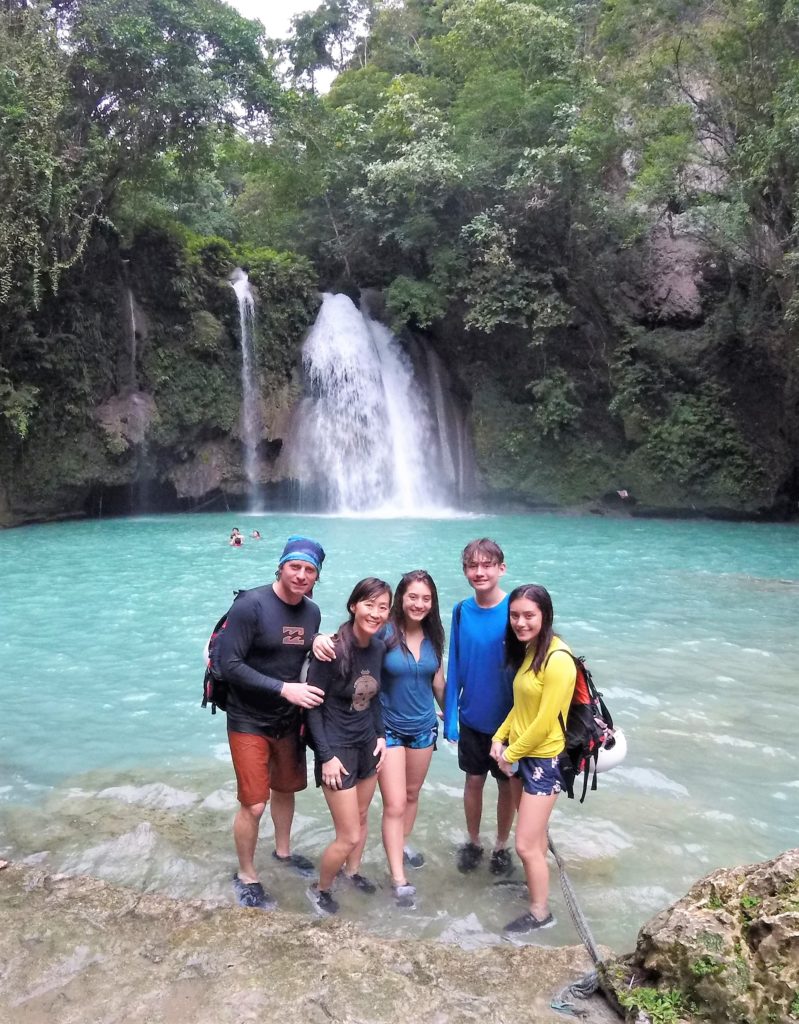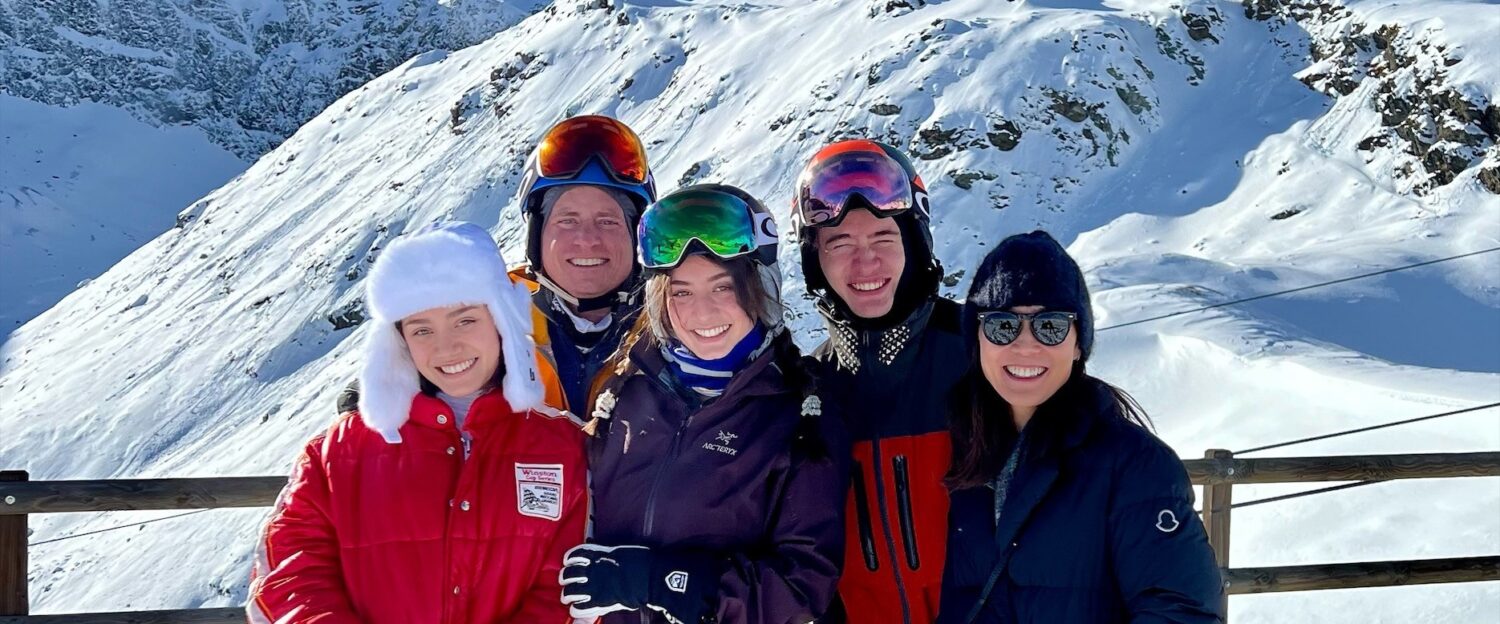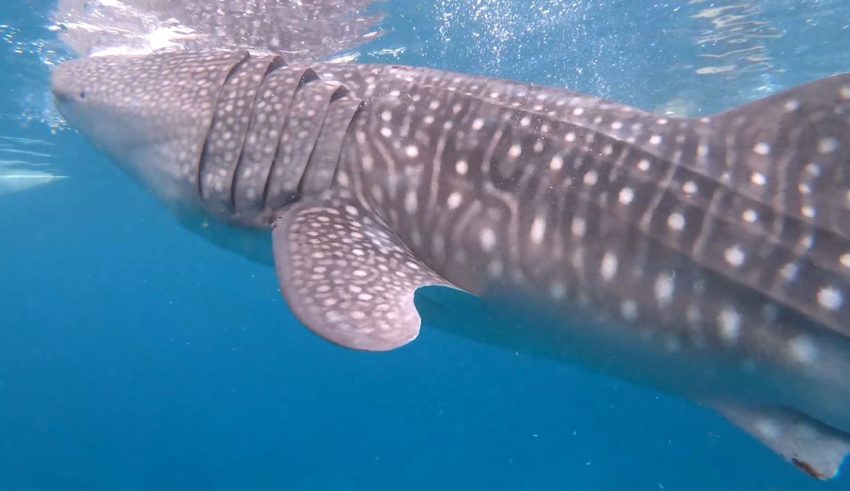In our search of “what to do in the Philippines”, Cebu and the surrounding area stood out for nice beaches, some interesting geographic sites, and the whale sharks. Originally we planned five days in the area, but this leg of the trip became compressed between the Elephant Reserve in Thailand and expanded travels through Korean and Japan. As a result, our tour of Cebu was shorted to two full days.
Cebu City, on the island of Cebu, is the Philippine’s second largest city and the original capital of the country. It was a trading port and a local center of power when Ferdinand Magellan “discovered” the Philippines in 1521 (and met his demise here shortly thereafter). The early Spanish expeditions set up Cebu City as their center of power in the region, and several historic Christian churches still survive today. Modern day Cebu City is an industrial city and still the local center of power.
We flew in to Cebu via a direct flight from El Nido and were met at the airport by Marc, our local guide recommended by a friend of a friend, and Stephen, our driver. Luckily we decided on a van transfer, versus taking public transportation, because a short 15 km drive to our hotel turned into a 2 hr odyssey due to construction and flooding from heavy rains, which blocked the main roads leading from the island, where the airport is located, to the city on the mainland. We eventually made it to the Big Hotel, checked into our modest rooms, and went across the street to have some local food. After picking up some other supplies, we turned in early, since the rest of our days had very early wakeup calls.
Everything in the Philippines starts early. Due to the time zones and close proximity to the equator, the sun rises and sets at 5:30 am. The locals get up with the sun to take advantage of the lack of heat (and traffic), so everything starts early. This meant that we were up at 4:45 to meet Marc and Stephen in the lobby, and then set off for the south of Cebu. We are not a morning family, but everyone has done a good job rallying.
Cebu is a long narrow island and the agenda for the day was to drive 2 hours south to Moboal, a city on the western side of the island, to snorkle in a marine reserve as well as swim with the sardines (millions of them) and turtles. This was to be followed by canyoneering, and then a final drive to our hotel in Oslob at the southern tip.
Driving the roads in the Philippines is like being inside the game “Grand Theft Auto”. The objective is to go as fast as possible and pass everyone and everything, while avoiding the random dogs, pot holes, pedestrians, tricycles, mopeds loaded with a family of five, etc. Every moment is a thril and the ride in the back of a van is eventful. It is not conducive to sleeping, however, so our tired family remained that way.
The weather for this leg of the trip was cool (high 70s / low 80’s) and wet. We got to Moboal and loaded onto a traditional Filipino boat (main hull with bamboo outriggers), which was made by hand and felt like it might fall apart. Our young Filipino crew who spoke little English and we cast off for the few kilometer cruise. Then they started the engine, which was bolted (maybe) into the boat without a muffler with a string controlling the throttle. It was the loudest boat ride we’ve ever taken – you couldn’t hear the person next to you. The highlight of this cruise was the millions of sardines schooling off a coral shelf. We all spent time free diving and watching them move as a pulsating organic body.
Rain collects in the highlands of Cebu and rushes down the limestone hills to create deep gorges with milky blue waterfalls and pools. Once ashore we got lunch and headed to Kawasan Falls for canyoneering. We parked at the base where the river dumps into the ocean and were ferried up the mountain on the back of motorcycles, which was an experience in itself. We then hiked 30 minutes up and down ridges to the top of the canyon. We were led by guides dropping from pool to pool and jumping from ledges up to 14 meters (40 ft) high in this amazing jungle canyon. The walls were lined with stalactites from the seeping groundwater. It was very cool. After three or four hours we exited the bottom of the canyon, exhausted, and then drove the final hour and a half to Oslob where we checked into our next hotel and had dinner.

The town of Oslob is a fishing village at the south end of Cebu that has developed a tourist attraction around the whale sharks that live in the Philippines. Every morning juvenile whale sharks show up to be fed by the fisherman while tourist snorkel nearby. It’s turned into quite the production for the local community and tourist come from long distances to partake. It starts at sunrise and by noon the sharks have eaten their fill and wander off. Swimming alongside these majestic creatures was a highlight of the trip.
We were up at 4:00 am again, in the water by 5:50 am, and back ashore and at breakfast by 8am. Afterwards we decided to skip a trip to an island sandbar and instead visited another smaller river canyon with incredible limestone formations, and then visited the Fantasy Lodge. The Lodge is a spa that has built a series of kawa baths, which are wood fired cauldrons, that work as hot tubs. You soak in the kawa bath filled with scented oils and flowers gazing out at the ocean. It was absolutely awesome, and much need muscle relaxation after a crazy week of physical activity. We relaxed until about 1pm and then started the long trek back to Cebu.
Being the Saturday before the Christmas holiday, traffic on the island was bad. Everything is a small bumby two lane road and it was choked with people, and then there was a tropical downpour. As a result, it took us six hours of driving to get back to Cebu. To make matters worse, Ellis came down with food poisoning that morning, and I got it that afternoon. It was miserable.
Despite the less than ideal conclusion, we had two amazing days in Cebu. Our guide Marc and driver Stephan were amazing and very accommodating. We highly recommend them for anyone heading to the Philippines.
Pro Travel Tips:
1. Places to go in the Philippines: We selected our sites based on what we found online, but in talking to Marc, we did pretty well hitting the highlights. If we were to come back, the one place we would definitely make the time to go is Coron, a set of islands north of El Nido. The highland rice terraces north of Manila are also supposed to be worth a visit. We skipped those given that we will see lots of terraces on other parts of our trip.
2. Go with a local guide if possible: Having a guide really helped getting the full Philippine experience. This included learning more about the history, the current political climate, finding locals deals and trying local foods. We did not use Marc to book our hotel rooms on the front and back ends of the stay, instead using online Booking.com – that was a mistake. We probably could have saved money going through him since it became clear that these online services funnel you into specific room categories.
3. The Philippines is not that cheap: According to Marc, the Philippines is the second most expensive country to tour in SE Asia behind XXX. Our family of five could eat at local restaurants for $20 usd (1000 Philippine pesos) sometimes, but often it was closer to $40. At hotels it was a lot more. We had budgeted $100 a day for rooms and found that we generally spent a lot more than that. Granted – we picked that number without much experience – but rooms are a lot more.


Terrific explanation of your adventures . It sounds like your local guide was excellent and gave you a super Philippine experience. All very special ‼️ Mary
Awesome. Trip of a lifetime…